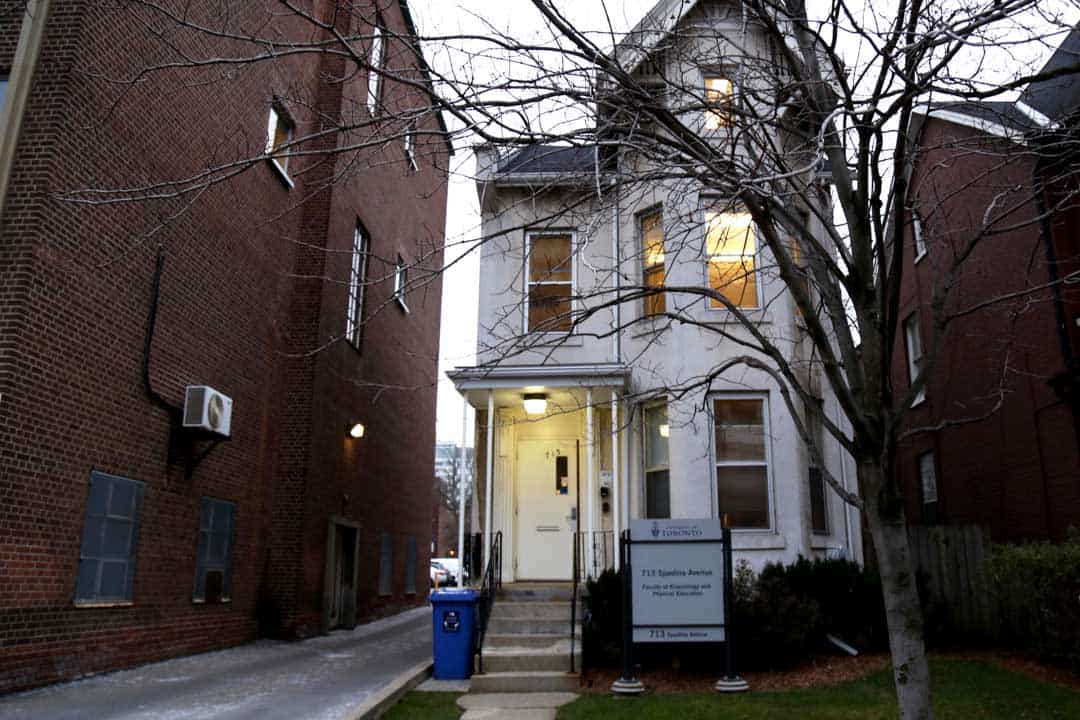Confusion about sports facilities and services on campus is nothing new. For a long time, students have been puzzled over whether they can go skating in the Varsity Arena, how much Varsity Blues game tickets cost, what swimming lessons are available and — wait — are non-Kinesiology students allowed to use the pool at the Athletic Centre, or can we only use the one at Hart House?
The Faculty of Kinesiology and Physical Education (KPE) is mindful of these sorts of questions. Based on feedback from surveys and focus groups, Beth Ali, Executive Director of Athletics and Physical Activity, said that “first-year students… wouldn’t go in the buildings because they thought that the swim lessons, the open rec basketball, varsity programs or intramural programs were only for KPE students.”
To counter this confusion, the faculty has adopted the moniker of “U of T Sport and Rec” as a way to differentiate the division of the faculty that runs co-curricular activities from its academic division.
The name was first used last year as part of the faculty’s Come See What You Can Do campaign to “engage all U of T students in sport and physical activity and raise awareness [of] the facilities, programs and services offered.”
“What we were introducing was the concept, that we live in KPE, we work with KPE, but U of T Sport and Rec is for the entire university student body and all of our programs, facilities and services are for the entire student body,” wrote Ali.
KPE is unique among other faculties in that it has an additional mandate to provide resources for sports and physical activity on all three campuses. This mandate is a result of a merger between the Department of Athletics and Recreation, the Graduate Program of Exercise Science, and the then-named School of Physical and Health Education in 1998.
But with such a broad mandate, it can be unclear what exactly falls under it given the breadth of programs and services related to sports and physical activity on the three campuses.
The most important point to note is that every student pays an ancillary fee to KPE and that the revenue collected is part of a co-curricular budget run by U of T Sport and Rec. This fee accounts for about 70 per cent of U of T Sport and Rec’s operating revenue, and it is kept separate from the budget run by the academic side of the faculty.
This means that the facilities, programs, and services operated by U of T Sport and Rec are open to all students. These facilities include the Athletic Centre, the Varsity Stadium and Arena, the Back Campus Fields, and even the intimidatingly named Goldring Centre for High Performance Sport.
A portion of the ancillary fee is remitted to UTM and UTSC to run programming for their own campuses. The operation of their facilities, which include UTM’s Recreation, Athletic and Wellness Centre and UTSC’s Toronto Pan Am Sports Centre, is funded by a separate fee from UTM and UTSC students.
U of T Sport and Rec also runs tri-campus programs like intramurals and Varsity Blues. The Tri-Campus Development League is a particular program where two teams from UTSG and one team from UTM and UTSC each compete in a semester-long tournament with weekly practices.
U of T Sport and Rec is the largest employer of students on campus with over $5 million of operating expenses paid to 1,114 student employees. Ali believes that as a university employer, KPE is more mindful of the challenges student employees face in balancing work and studies.
“There’s an understanding that, yes you’re an employee, but you’re also a student and because you’re a student, you being successful as a student is our first priority. You working for us is the second priority,” said Ali.


